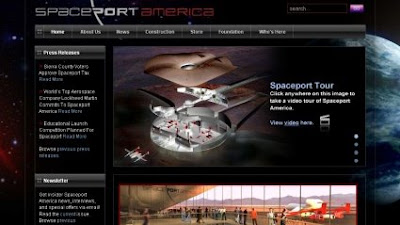 With the upcoming November elections in the United States, both John McCain and Barack Obama are cementing their positions regarding various subjects--including the Vision for Space Exploration.
With the upcoming November elections in the United States, both John McCain and Barack Obama are cementing their positions regarding various subjects--including the Vision for Space Exploration.
(Orlando Sentinel) U.S. Sen. John McCain took one small step -- but not a giant leap -- toward outlining his NASA policy today by announcing his support for the agency's moon-Mars program in a release that commended NASA on its 50th birthday.
"As President, I will act to make ensure our astronauts will continue to explore space, and not just by hitching a ride with someone else. I intend to make sure that the NASA constellation program has the resources it needs so that we can begin a new era of human space exploration," said the Republican presidential candidate in a statement. The impact was perhaps diminished somewhat by the statement's failure to capitalize "Constellation."
Meant to replace the space shuttle, set to retire in 2010, the Constellation program aims to send astronauts to the Moon, and eventually Mars, aboard a series of new rockets and capsules.
John McCain has previously stated his interest in sending a man to Mars, while Barack Obama has largly "danced around the issue," supporting robotic exploration but speaking nothing about landing people on other worlds.
(Orlando Sentinel) None of them included manned missions to the moon or Mars –- pillars of NASA’s current exploration agenda. Patti Grace Smith, former Associate Administrator for Commercial Space Transportation with the Federal Aviation Administration, said Obama instead was focused on:
1. Closing the gap between the shuttle and its replacement.
2. Completing the International Space Station.
3. Using NASA to monitor climate change.
4. Supporting scientific research
5. Keeping weapons out of space
You can hear her presentation here, about 20 minutes into the panel discussion (first video). After this posting, the Obama campaign forwarded an e-mail from Patti Grace Smith, which notes she was "summarizing points that were already released as part of Obama's plan" and that she is not a representative for Obama, just an "early Obama supporter and fundraiser."
Even though neither campaign has expressed a desire to fully fund NASA (which would actually allow them to accomplish these visionary goals), McCain has at least shown an interest in expanding our civilization beyond our homeworld, instead of viewing the solar system through the lenses and instruments of robots.
While the space community needs to work with both parties in order to ensure that space exploration does not become a partisan issue, they should be more than willing to vote against candidates content to keeping the human race Earth bound.
















![ColonyWorlds[at]Gmail[dot]com](http://img.photobucket.com/albums/v438/hiddennook/ColonyWorlds.png)






